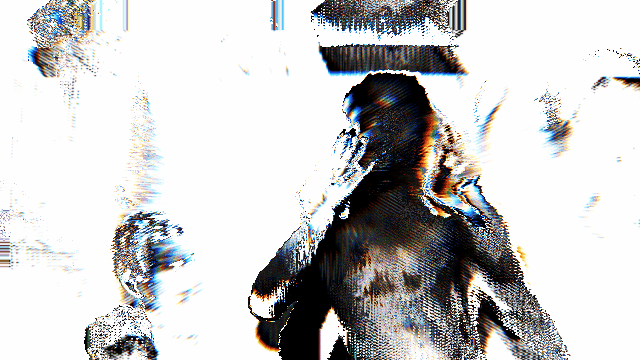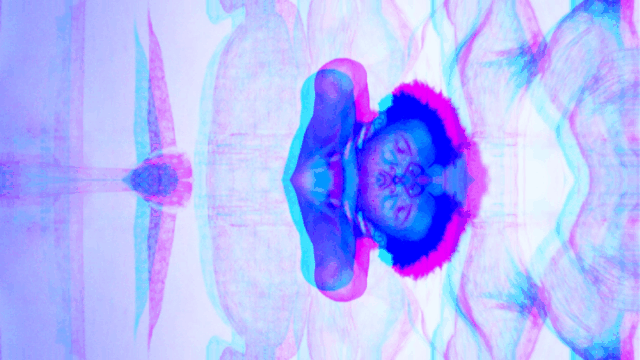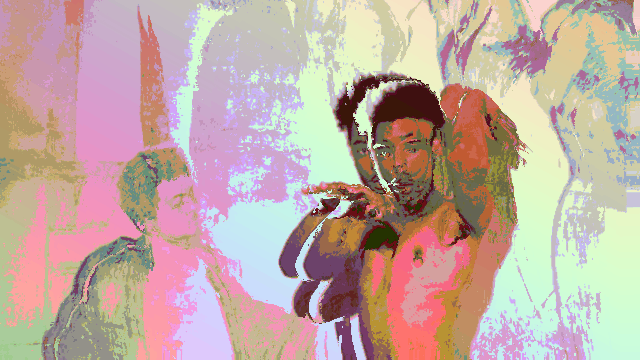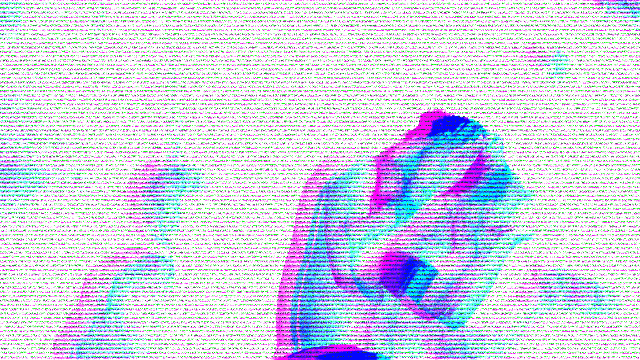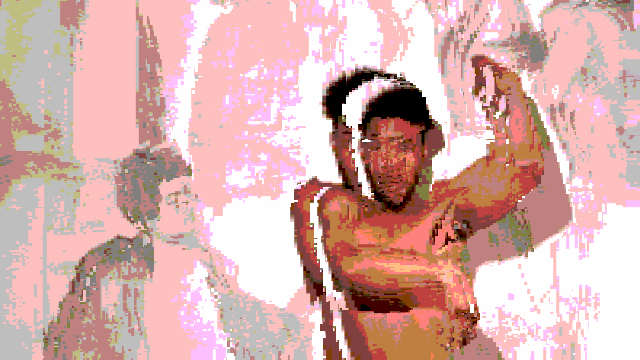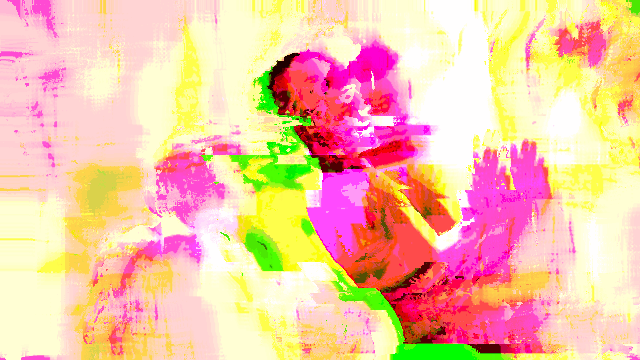I chose to capture my body performing. I performed for myself and the camera in front of a large-scale drawing. I decided to film myself as an extension of my previous project. Also, recording my progress has been a way to research parts of my performance practice. This method allows me to analyze and find areas of strength and weakness.
Takeshi Murata, Monster Movie, 2005, single-channel video, color, sound;04:19 minutes( https://www.youtube.com/watch?v=t1f3St51S9I)
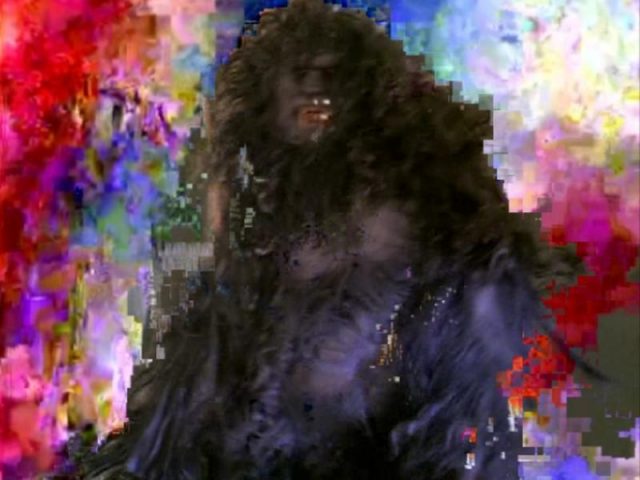
My process included experimentation with a high-speed camera (Edgertronic).
Phase 1: Using the high-speed camera, record clips at 10 -30 second movement intervals.
Phase 2: Break down the footage further for processing.
Phase 3: process the footage through Datamoshing program.
Phase 4: Export as a GIF
I am interested in the glitch and the experience of queering material. The slowness and movement generated by the camera are visually seductive, adding a layer of distortion.
The camera can capture a short amount of movement. It becomes a compact version of the performance. I am thinking about compression and expansion. The data moshing provides an opportunity to pull apart elements into a different realm besides just a slowed version of the vogue. The slow motion offers me the ability to understand my technique. It has the potential to be a coach to break down movement into its specificity (consider lines, facial expression, posture, etc.) However, Datamoshing gives a new level of play. The distortion becomes a tool of experimentation linked to the vogue’s improvisation. All this is formed into a GIF and animated moving g image that acts as a loop or a vignette. It emphasizes a moment of urgency and repetition.
This process exercises my level of play within my performance and the aftermath. I have discovered a new way for my performance to exist in a digital space. I am also dissecting my vogue elements, creating new forms of movement.
EDGERTRONIC (EDITED PROCESS CLIPS)
GIF:
